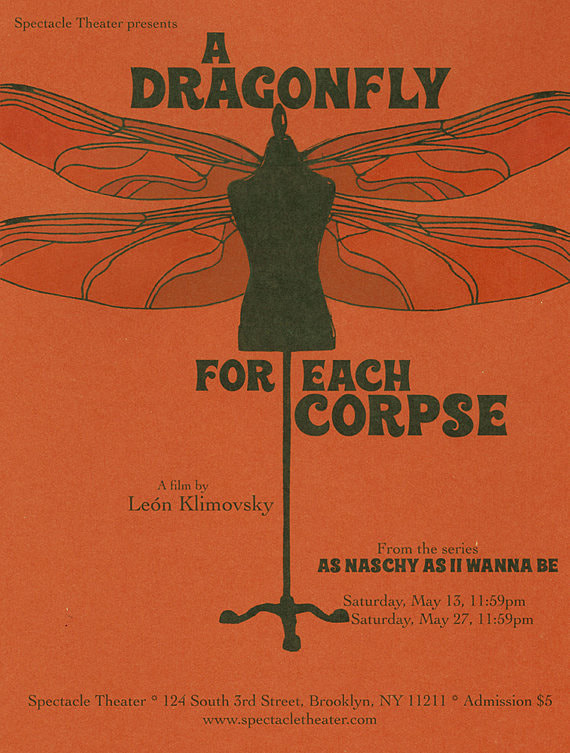A woman's clothes-wearing killer is slashing their way through Milan, leaving a dragonfly on each corpse as a memento. This practise is apparently an homage to some obscure ancient civilisation's method of dealing with undesirables, which is exactly what the killer think they're doing in Milan. That's a view actually shared by Inspector Scaporella, played by Paul Naschy as a grizzled cigar-chomping veteran with a bad comb over. Nonetheless, after some past high-profile scandals, he still has to put his sympathies aside and try to catch the killer. As the pile of prostitute and drug addict victims grows ever larger, we realise that the killer might be someone close to Scaporella. Is it his (life, not law) partner Silvana, or one of his friends, a high society lot who seem to have plenty of skeletons in their closets?
Or, at a stretch, it might be his police commissioner; we're not exactly over-burdened with suspects here, although a couple of characters who are integral to the plot are introduced late on only to be immediately dispatched. After a while it becomes fairly obvious that Silvana (Mrs Scaporella) isn't the killer, but exists to provide a gender politics commentary which acts as a kind of companion piece to Daria Nicolodi's conversations with David Hemmings in the same year's Profondo Rosso.* Oh, and she's also there to show her tits a couple of times.
But yeah, that pretty much leaves Scaporella's group of friends as the suspect pool. They're fleshed out to varying degrees, but no matter what way you spin it, the end reveal isn't overly shocking or exciting.** There are probably too many victims presented, which doesn't allow much time for characterisation, or plot development. None of the murders are exactly top-of-the range set pieces either, although one, set in the clichéd (in horror films, in not gialli) environs of an abandoned fairground ride, is semi-effective.
There are some interesting touches, not least the necrophile professor character who provides both some invaluable exposition regarding the provenance of the dragonfly motif and some envelope-pushing thematic content (it mightn't be pushing it too much to see him as being representative of the Spanish ruling class fucking the rest of the moribund nation). He also commits the classic giallo error of uncovering some important informatio, and using this knowledge for attempted blackmail rather than police-assisting.
Later, another character commits the classic giallo error of uncovering the actual identity of the killer, then phoning the police to arrange a meeting so he can divulge said info. As always, he never gets a chance to impart said info, as the omniscience of the killer always seems to extend to knowing the details of such proposed meetings.
This character then doubles down on his stupidity by blowing a second chance to finger the perp (double entendre fans should have a swell time with that sentence), when he chooses to use his last few seconds of life to indulge in an abstract portrait of the killer, instead of just writing their bloody name down. Naschy was certainly au fait with the genre anyway, as such irrationalities recur constantly. (He was also clearly a fan of Dirty Harry-style cop films, and relished any opportunity afforded him to indulge in macho gun play, to the extent that gun toting largely replaces his usual procession of sex scenes).
As was common with Naschy films, the music is of the library variety, but again was chosen with a clear knowledge of the genre, with pieces from Mario Bava films being particularly prominent. The only drawback of this approach is that it makes us very much aware that we are not, in fact, watching a Mario Bava film, which is always a bad thing.
So, overall this isn't a great giallo. The central mystery comes up short, and the whole thing seems a bit vanilla, even with the necrophilia etc. There's a sense of Naschy and Klimovsky seeking to replicate the strange atmosphere of the Italian giallo, which seems organic to those films but imposed here (cf the Nazi gang). Still, there's plenty to enjoy (cf the Nazi gang), and Naschy is great value as always. The killer uses a dazzling array of weapons, (including golf club and umbrella***) and things are never boring. In the end, this slots comfortably into the back end of the pantheon of gialli, and, being that Naschy was clearly a fan of the genre, he can be justifiably proud of this fact.
*The near-to-climactic searching the house scene is also redolent of Profondo Rosso, albeit in a far more industrial and low budget way. It's worth noting that this film was actually shot in 1973, and sat on the shelf for a couple of years, so any resemblance is coincidental.
**There are three characters who so closely resemble each other that I'd defy you to be able to identify which one was which if you were presented with them after a viewing of the film. This may be a case of my semi-face blindness hampering me, but then again it may not be.
|
|
***They also store most of these weapons, and various other incriminating evidence, in a single room, AKA lair, in the manner of an Edgar Wallace villain. This actually makes Scaporella's late-in-the-game attempts to garner incontrovertible proof as to the killer's identity a complete waste of time; if he went on instinct, like his wife, the evidence would have been waiting for him in the lair. Course, he wasn't to know this, but still.
|

 RSS Feed
RSS Feed
